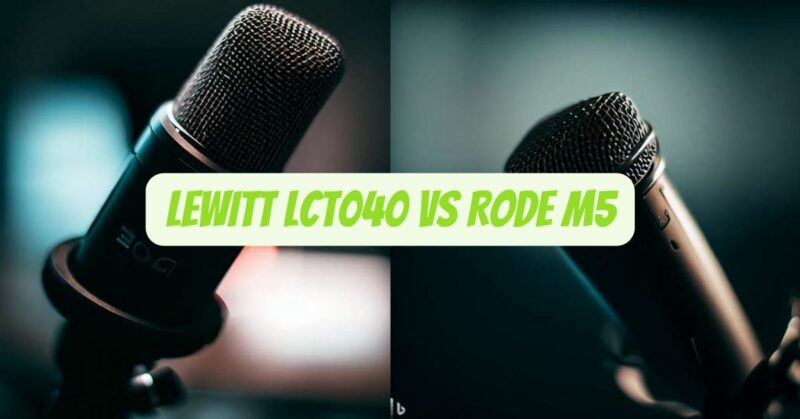Small-diaphragm condenser microphones are popular choices for capturing acoustic instruments, vocals, and various other sound sources with precision and clarity. In this article, we compare two notable contenders in this category: the Lewitt LCT040 and the Rode M5. We will explore their features, sound quality, and performance to help you make an informed decision on which microphone suits your recording needs best.
Design and Build Quality
Both the Lewitt LCT040 and Rode M5 exemplify solid construction and thoughtful design. The Lewitt LCT040 features a compact and lightweight design, making it suitable for various recording applications. It sports a durable metal housing that ensures longevity and protects the microphone from handling noise and interference. The Rode M5 follows a similar design philosophy, with a sleek and robust build quality that is built to withstand the rigors of professional use.
Sound Quality and Performance
When it comes to sound reproduction, both microphones deliver impressive results. The Lewitt LCT040 boasts a wide frequency response and a neutral, transparent sound signature. It captures accurate and detailed audio, making it suitable for capturing the natural nuances of acoustic instruments. The Rode M5 also provides excellent sound quality with a balanced frequency response and a slight emphasis on the high frequencies, adding a touch of brilliance to the recordings. Both microphones exhibit low self-noise and handle high sound pressure levels, ensuring clean and distortion-free recordings.
Polar Patterns and Versatility
The Lewitt LCT040 features a cardioid polar pattern, which focuses on capturing sound from the front while attenuating off-axis sounds, reducing room reflections and ambient noise. This makes it ideal for isolating individual sound sources. On the other hand, the Rode M5 offers interchangeable capsules, allowing you to choose between cardioid and omnidirectional polar patterns. This versatility expands the microphone’s functionality, enabling it to adapt to different recording situations.
Accessories and Extras
When it comes to additional accessories and extras, both microphones offer practical solutions. The Lewitt LCT040 comes with a foam windscreen and a mic clip, providing basic protection and mounting options. The Rode M5 includes a microphone clip and a pop filter, enhancing versatility and reducing plosive sounds during vocal recordings. These accessories can contribute to better overall recording quality and ease of use.
Price Considerations
Price is often a determining factor when choosing between microphones. The Lewitt LCT040 typically falls into a more affordable price range while still delivering exceptional performance and sound quality. On the other hand, the Rode M5, with its additional features and accessories, tends to have a slightly higher price point. Consider your budget and specific recording needs to find the best balance between performance and affordability.
Conclusion
The Lewitt LCT040 and Rode M5 are two impressive small-diaphragm condenser microphones that offer excellent sound quality, versatility, and durability. The LCT040 shines with its transparent sound reproduction and compact design, while the Rode M5 provides added versatility with interchangeable capsules and a slight emphasis on high frequencies. Ultimately, the choice between these microphones depends on your specific recording requirements, preferences, and budget. Consider the sonic characteristics, polar patterns, and accessories to make an informed decision and elevate your recordings to the next level.


